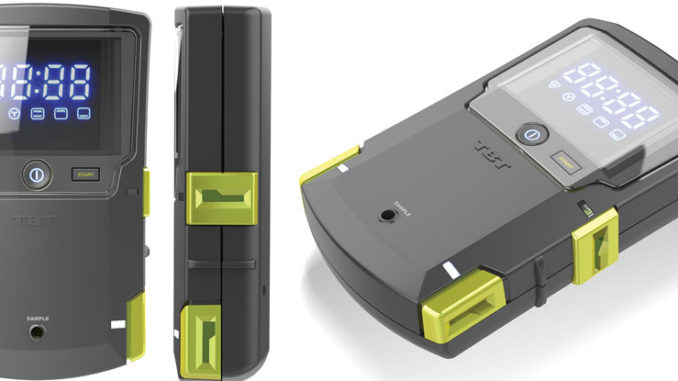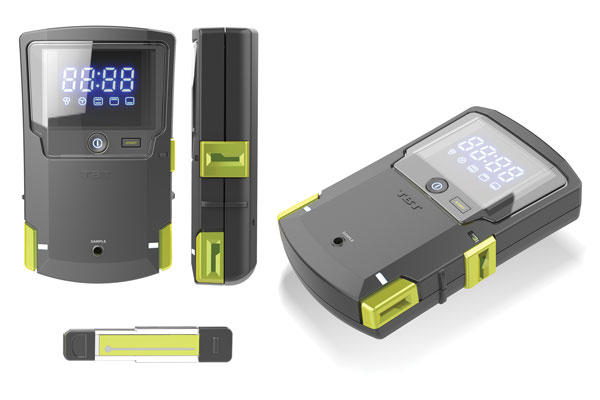
Akron firm’s hand-held device will help detect marijuana use
By Lynne Thompson
Triple Beam Technologies is preparing to begin field testing a hand-held device that will help police officers determine whether marijuana users are too high to drive safely—technology developed in response to the legalization of medical and/or recreational marijuana by one state after another.

Kathy Stitzlein, founder and chief executive officer of the Akron-based startup, explains that the Cannibuster measures THC, the main psychoactive compound in pot, in a saliva sample on a single-use test strip that can be retained for backup testing. She describes it as an improvement over devices, both in use and still in development, that simply detect the presence of THC rather than the exact amount. The proposed impairment level is 50 nanograms per milliliter of saliva in the 14 or so states mulling saliva testing, according to a spokesperson from the Ohio State Highway Patrol.

“If you just get a yes/no, it really doesn’t have that much more value than the cop saying, ‘I smell marijuana, I can see the signs of it,’” she says.
She adds that getting an impaired-driving conviction currently involves getting a urine sample or transporting the driver to a medical professional for a blood draw. In Ohio, where non-smoking forms of medical marijuana recommended by a physician have been legalized, the legal limit is 2 nanograms of THC per milliliter of blood.
“Even in states that don’t require a court order … the average time between the traffic stop and getting the blood work is about an hour and a quarter,” Stitzlein says. “With marijuana, that’s quite a long time. The levels peak real rapidly and then start to drop off.”
Stitzlein got the idea for developing the device five years ago, around the time the Colorado law legalizing recreational-pot use went into effect, from two of her four children during a family dinner in their Millersburg home. The former design engineering manager at a Wooster metal fabricator had begun work on a Ph.D. in biomedical engineering at The University of Akron and was looking for an extra-credit class project.
“They kept insisting to me, ‘Yeah, the legalization of marijuana is going to spread everywhere. It’s going to come across the whole U.S.!’” she recalls.
The idea for a class project became the subject of her dissertation, then an entry in a 2015 student entrepreneurship competition that won her team $10,000 and a promise of $20,000 worth of mentoring and advisory services from local entrepreneurs. The team subsequently received a $50,000 grant from the Ohio Third Frontier Technology Validation and Startup Fund, which in turn yielded $50,000 in matching funds from the university. Another $25,000 from the Great Lakes Innovation and Development Enterprise followed.
“Since then, we’ve just decided to self-fund,” says Stitzlein, who works with three other Triple Beam employees in an 800-square-foot lab in the Bounce Innovation Hub. “We want to retain ownership through the preproduction phase.”
Potential Cannibuster users can sign up to evaluate its design in focus groups and/or volunteer to become one of the half-dozen or so field test sites at triplebeam.tech. A partnership with Schaumburg, Illinois-based Sparton Medical Systems should produce a fully functional prototype by early 2020 for testing in early spring. Although the law-enforcement community is Triple Beam’s target market, it has received inquiries from employers, labor unions, criminal-justice officials and even medical-marijuana users who want to monitor levels of therapeutic cannabinoids.
“A lot of people assume, ‘Oh, marijuana users are all not responsible people,’” she observes. “But there are people that are very responsible and want to make sure that, whether they’re using it medicinally or recreationally, they are safe to drive.”
